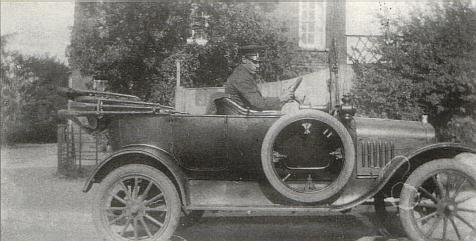FIRE! FIRE! AT LEVERSTOCK GREEN BUILDINGS GUTTED
EXCESSIVE HEAT THEORY
A FIRE OCCURRED AT LEVERSTOCK GREEN ABOUT 3 O’CLOCK YESTERDAY (Friday) AFTERNOON AS WE WERE GOING TO PRESS, AND TOTALLY DESTROYED A BARN AND STABLING ADJOINING THE THREE HORSESHOES PUBLIC-HOUSE.
It is supposed that the heat of the sun caused the conflagration. Smoke was seen issuing from the barn and almost immediately the whole premises seemed to burst into flames. The alarm was
QUICKLY SPREAD
and in a short time numerous villagers were on the scene, and at once set to work with buckets of water. It was obvious that nothing could save the buildings, and attention was then concentrated on keeping the fire free from the licensed premises, and the numerous workers were successful in their objective. Assisted by the breeze the flames
BURNED FIERCELY
and within half an hour the buildings were completely gutted. Fortunately there were no animals in the stables at the time, but a number of agricultural implements and a quantity of straw suffered destruction.
A message was wired to the Hemel Hempstead fire station, and the Brigade under Captain Hancock, turned out smartly and was quickly on the scene with the steamer. They fixed the hydrant and commenced to take the hose towards the premises, but found they had
NOT SUFFICIENT HOSE
for the distance, which was considerable. Dr. Gilroy, who had motored over, brought a fireman back to Hemel Hempstead with him for a further supply.
The inn is the property of Mr. Finch and the lessees are the Chesham Brewery Co. Ltd. Mr Perkins is the tenant….. [Gazette 22 July 1911]



